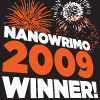Today’s question is from Deanna…..
I have a few questions. Would you share with us your curriculum map? Also, I have heard of teachers who combine their reading and writing workshop conferences together, just meeting once but discussing both reading and writing. Have you ever done that? What do you recommend? One last one…how long do your students silent read each day?
I’ll take these one at a time. 🙂
My curriculum map changes every year. This is my fourth year teaching, so I am still experimenting with what works best. And next year I will changing from 2 classes at 2 hours each to 4 classes at 1 hr each. This means my curriculum map will change again! But in reading, I begin the year with my own modified version of the Fountas and Pinnell first 20 days of reading. I also use the first month to set the tone in reading workshop, as my students have not experienced it before. Then, I read Tuck Everlasting near the beginning of each year. I use this unit to teach my students how to annotate a reading (inspired by Monica Edinger!). And around April/May, we read The Devil’s Arithmetic as part of our Holocaust unit. Holocaust education is part of our district’s mission, so it is taught at every grade level. Oh, and I teach literary essays (using Calkins’ Units of Study) as a reading unit, usually around December.
Other than that, I teach a lot of mini-lessons, based on the needs of my students. Comprehension Connections: Bridges to Strategic Reading and Strategies That Work: Teaching Comprehension for Understanding and Engagement have been lifesavers for me. I base my mini-lessons on our read-alouds, which change from year to year. Right now, we are studying Greek mythology while reading The Lightning Thief as a read-aloud. This also ties in to the social studies curriculum.
In writing, I am also still experimenting. This year I taught the following units of study:
- writer’s notebooks
- personal narrative
- friendly letters
- persuasive business letters
- personal essay
- research papers
- poetry
- multigenre research papers
For the second question, I already talked a bit about my conferencing routines here. I do not combine reading and writing conferences, because many of my reading conferences are informal!
As for silent reading; it’s the building block of my reading workshop! At the beginning of the year, I spend a lot of time building up my students’ stamina. We begin with as little as 5 minutes of independent reading time each day, adding a few more minutes in each consecutive class. By the middle of the year, I devote an average of 10-20 minutes each day to independent reading. Some days, we read even more! Plus, I train my students to pick up a book any time they have a free second. Their novels travel with them from class to class, so they frequently read when they finish in-class assignments. Some of them even read on line in the hallway! But I do not skip silent reading unless it is absolutely necessary. If I don’t make time for independent reading, why should my students?
I also model during silent reading, by reading myself. I often spend some of the time helping students choose books or conferencing, but I make sure my students see me reading a few times each week, too. It’s a great example to set, showing them how reading is such an integral part of my life. Plus, the books I read are always picked up as soon as I add them to the bookshelf, because my students trust my opinion. Plus, they spend a few days staring at the cover while watching me read and react, so they are usually dying to read the same book! Once they finish a book we have both read, we have fantastic conversations.
I am still working on a schedule for next year, when my classes will be 55 minutes long. No matter what, I will make time to read silently. And to read aloud. It’s just going to be a tight squeeze with the time crunch.
Filed under: What Do You Want to Know | Tagged: reading workshop in middle school, What Do You Want to Know, workshop units of study, writing workshop in middle school | 8 Comments »




